First drive: 2020 Land Rover Defender 110 in UAE
The 2020 Land Rover Defender 110 recently made its way to our local shores as one of the most anticipated cars of the year, received with mixed reactions before its limelight was stolen by far more retro Ford Bronco and maybe the upcoming Jeep Wrangler V8. We had a go at it on UAE sand to see if the modernised new model does justice to the nameplate.
Looking at the exterior, the side and back profiles of the new Defender 110 resonates a bit of the old design. The front, however, goes for a different look, with a more aerodynamic design compared to the flat-fronted old one. It also sports big street-smart wheels rather than the standard steelies it used to be mostly seen in (although the latter is still available on the base model). Personally, our favourite is the 5-spoke 20-inch grey alloy wheels in terms of looks, although it’s probably detrimental to maximising its offroad capabilities. The optional side-mounted storage boxes, roof rack and add-on plastic fender flares are an interesting addition to make your vehicle look more adventure-worthy.
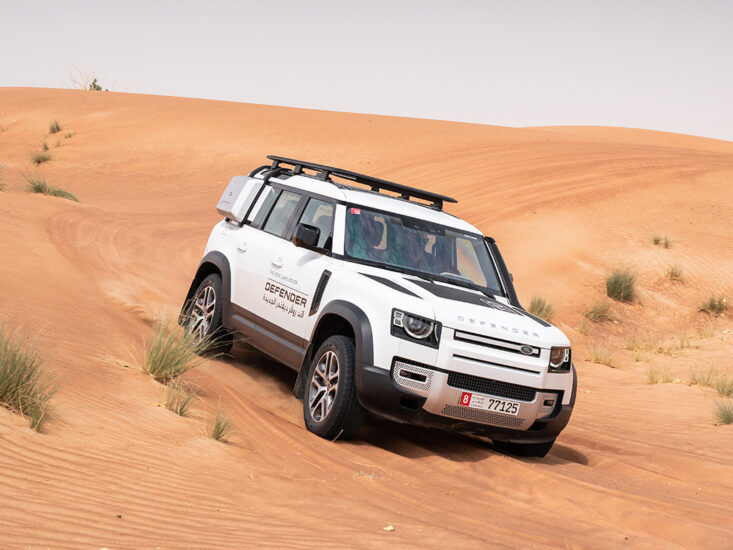
As you enter the car, the new Defender attempts to mix durability with luxury. Across the front is a powder coated magnesium cross-beam which houses the optional fully digital instrument cluster on the driver’s side, while the passenger side has a shallow storage shelf. In the middle there is the 10-inch screen for the infotainment system. Under the screen are the dual-purpose knobs which were previously seen in all newer Range Rovers.
The Defender 110 has seating for up to 8 people. Our tester was a 7-seater version with three rows, although that foldable last row is not particularly pleasant for adults, so Land Rover calls them “jump” seats.
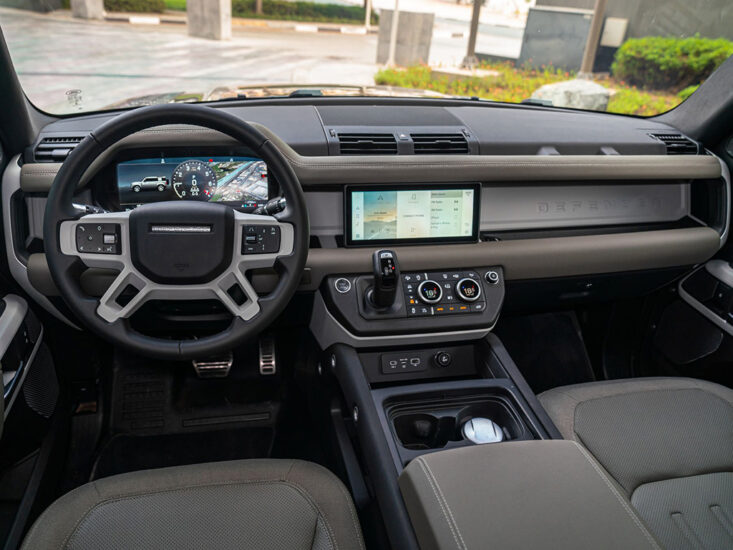
Under the hood, we had the 3.0-litre turbocharged inline 6 cylinder engine option, which is coupled with a small electric motor to aid acceleration and fuel economy. The powertrain produces 400 hp and 550 Nm of torque, mated to an 8-speed ZF automatic transmission. This is enough to propel it from 0 to 100 kph in a claimed 6.3 seconds. It had more than enough power when we took it to the sand dunes. It is easily a much more capable car in its stock form than the previous generation which was built for mud rather than sand.
On the road, the ride was excellent. Land Rover’s air suspension system is standard across the range, so even if you get the base SE model with steel wheels, you won’t be complaining of back pain after a long road trip like you would with its bare-bones predecessor. It basically gives off a previous-generation LR4 vibe after the current Discovery took on a more city-friendly demeanour.
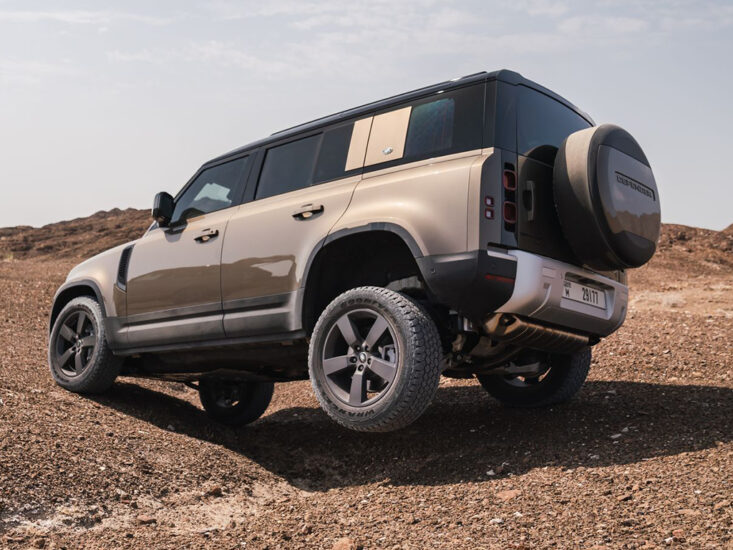
When viewed pragmatically, the new Land Rover Defender 110 is easily a much better vehicle overall than the previous one, at least in terms of power, ride, handling and sand capabilities. No surprises there as the old one had decades old hardware purpose-built with different tasks in mind. While the new Defender might not win over purists, it has certainly opened up to a larger audience of the well-heeled mall-hopping valet-service variety. Whether it treads the balance between old-school charm and new-age luxury remains up for debate, as cheaper American stalwarts seem to be handling such objections far better.
For prices and specs, visit the Land Rover buyer guide.
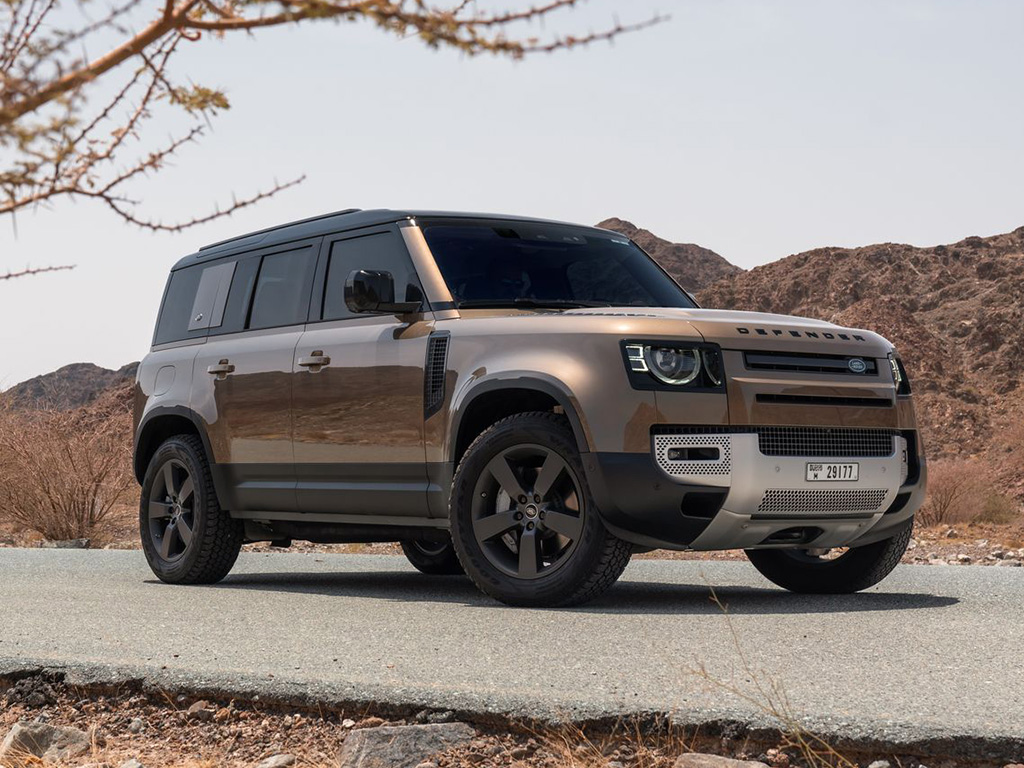
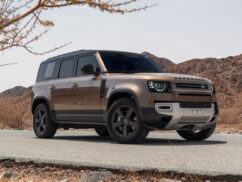
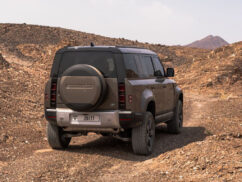
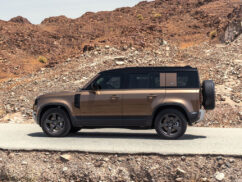
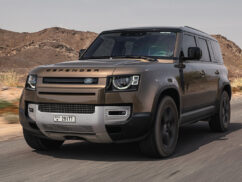

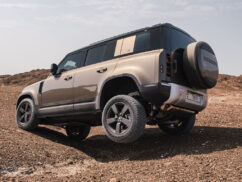




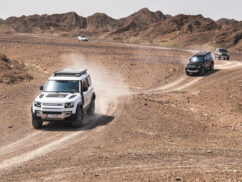
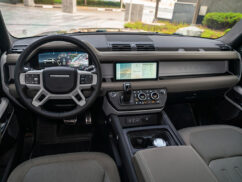
Comments
Navin
I’ve seen it in the flesh and IMO it doesn’t quite make the cut. I’m looking forward to seeing the Ford Bronco!
palioman
All that money and the last name in reliability….